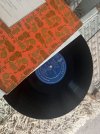I find the truth is in the ears of the beholder. I would be hard pressed to say one medium is better than another. I subjectively support
a TT just "because". I also like Jiffy peanut butter, "because". I like an Otari over a Studer reel to reel, "because", I like Thoren and McIntosh
"because".
That 1.0 vs .1 or .01 is getting to be a joke. I think many well meaning scientist need to crank up a Victrola and understand where we came from
(and enjoying the heck out of it) to where we are. Nitpicking about "THE DIFFERENCE" when the argument is about .00 anything. It is ridiculous!
Saying or proving any medium is better than another has never been an issue for me when comparing the room at 50% of the sound to begin with.
It's like nitpicking about a 500lb bomb or a 1000lb bomb at ground zero for an ANT. Kind of immaterial isn't it?
That ANT became part of eternal star dust. I think it was an X-File!


